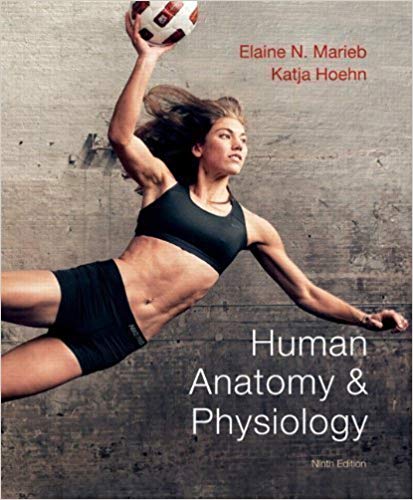Test Bank For Anatomy And Physiology 9th Edition by Marieb
Original price was: $55.00.$22.00Current price is: $22.00.
Test Bank For Anatomy And Physiology 9th Edition by Marieb is a comprehensive resource that covers all the essential content needed to ace your next exam. This Test Bank provides you with practice questions and detailed answer explanations for every chapter in the book, ensuring that you are fully prepared for even the most challenging questions on the test.
In addition, the Test Bank also includes a diagnostic test to help you identify any areas where you may need additional review. With its comprehensive coverage and high-quality content, the Test Bank For Anatomy And Physiology 9th Edition by Marieb is an essential tool for any student striving for success in their coursework.
Digital item No Waiting Time Instant Download
ISBN-13: 978-0321802187 ISBN-10: 0321802187
Description
Test Bank For Anatomy And Physiology 9th Edition by Marieb
Patton: Anatomy and Physiology, 9th Edition Chapter 03: Chemical Basis of Life
Test Bank
MULTIPLE CHOICE
1. Which of the following represents a trace element in the body?
a. Sulfur
b. Chlorine
c. Iron
d. Phosphorus
ANS: C
DIF: Memorization
REF:
TOP: Basic Chemistry
2. The kind of element is determined by the number of:
a. protons.
b. neutrons.
c. mesotrons.
d. electrons.
ANS: A
DIF: Application
REF:
TOP: Atomic Number and Mass Number
3. Atomic weight is determined by the number of:
a. protons and electrons.
b. neutrons and electrons.
c. neutrons, protons, and electrons.
d. protons and neutrons.
ANS: D
DIF: Application
REF:
TOP: Atomic Number and Mass Number
4. Carbon has an atomic number of 6. The number of electrons found in the first shell is:
a. two.
b. four.
c. six.
d. eight.
ANS: A
DIF: Application
REF:
TOP: Energy Levels
5. The atomic number of carbon is 6. How many unpaired electrons are in its outer shell?
a. Two
b. Three
c. Four
d. Five
ANS: C
DIF: Application
REF:
TOP: Energy Levels
6. A negatively charged subatomic particle that moves around the nucleus is a(n):
a. orbital.
b. proton.
c. neutron.
d. electron.
ANS: D
DIF: Memorization
REF:
TOP: Atomic Structure
7. When atoms combine, they may gain, lose, or share:
a. electrons.
b. protons.
c. neutrons.
d. nuclei.
ANS: A
DIF: Application
REF:
TOP: Attraction Between Atoms
8. An ionic bond is formed by:
a. two or more positive ions combining.
b. two or more negative ions combining.
c. a positive and a negative ion attracting each other.
d. sharing of a pair of electrons.
ANS: C
DIF: Application
REF:
TOP: Ionic Bonds
9. An example of an element would be:
a. Ne.
b. CO2.
c. C6H12O6.
d. H2O.
ANS: A
DIF: Application
REF:
TOP: Elements and Compounds
10. An isotope of an element contains different numbers of ____ from other atoms of the same element.
a. electrons
b. protons
c. neutrons
d. both protons and neutrons
ANS: C
DIF: Application
REF:
TOP: Isotopes
11. Which of the following elements is least likely to combine with another element?
a. Hydrogen
b. Helium
c. Oxygen
d. Carbon
ANS: B
DIF: Synthesis
REF:
TOP: Attraction Between Atoms—Chemical Bonds
12. The hydrogen isotope tritium consists of:
a. one proton.
b. one proton and one neutron.
c. two protons and one neutron.
d. one proton and two neutrons.
ANS: D
DIF: Application
REF:
TOP: Isotopes
13. Which of the following bonds are the weakest?
a. Ionic
b. Hydrogen
c. Electrovalent
d. Covalent
ANS: B
DIF: Memorization
REF:
TOP: Hydrogen Bonds
14. The type of reaction in which substances are combined to form more complex substances is called a(n) _____ reaction.
a. reversible
b. exchange
c. synthesis
d. decomposition
ANS: C
DIF: Memorization
REF:
TOP: Chemical Reactions
15. The process of the digestion of food is an example of which type of reaction?
a. Synthesis
b. Decomposition
c. Exchange
d. Reversible
ANS: B
DIF: Application
REF:
TOP: Chemical Reactions
16. Substances that accept hydrogen ions are called:
a. acids.
b. bases.
c. buffers.
d. salts.
ANS: B
DIF: Memorization
REF:
TOP: Bases
17. Acids:
a. are proton donors.
b. taste sour.
c. release hydrogen ions in an aqueous solution.
d. All of the above are true of acids.
ANS: D
DIF: Synthesis
REF:
TOP: Acids
18. A solution that contains a greater concentration of hydroxide ions (OH–) than hydrogen ions (H+) is a(n) _____ solution.
a. acidic
b. alkaline (basic)
c. neutral
d. Not enough information is given to determine the character of the solution.
ANS: B
DIF: Application
REF:
TOP: Bases
19. In the presence of a base, red litmus paper will:
a. stay red.
b. turn blue.
c. turn green.
d. turn yellow.
ANS: B
DIF: Memorization
REF:
TOP: Acids and Bases
20. The most abundant and important compound(s) in the body is(are):
a. air.
b. water.
c. proteins.
d. nucleic acids.
ANS: B
DIF: Memorization
REF:
TOP: Water
21. Approximately what percentage of body weight is water?
a. 40%
b. 50%
c. 60%
d. 70%
ANS: D
DIF: Memorization
REF:
TOP: Water
22. AB + CD AD + CB is an example of a(n) _____ reaction.
a. synthesis
b. exchange
c. decomposition
d. reversible
ANS: B
DIF: Application
REF:
TOP: Chemical Reactions
23. Which of the following represents properties of water?
a. High specific heat
b. High heat of vaporization
c. Strong polarity
d. All of the above
ANS: D
DIF: Synthesis
REF:
TOP: Properties of Water
24. The approximate pH of gastric fluid is:
a. 10.
b. 8.
c. 4.
d. 2.
ANS: D
DIF: Memorization
REF:
TOP: The pH Scale
25. Which of the following is not one of the major groups of organic substances in the human body?
a. Proteins
b. Salts
c. Lipids
d. Nucleic acids
ANS: B
DIF: Synthesis
REF:
TOP: Organic Molecules





Be the first to review “Test Bank For Anatomy And Physiology 9th Edition by Marieb”